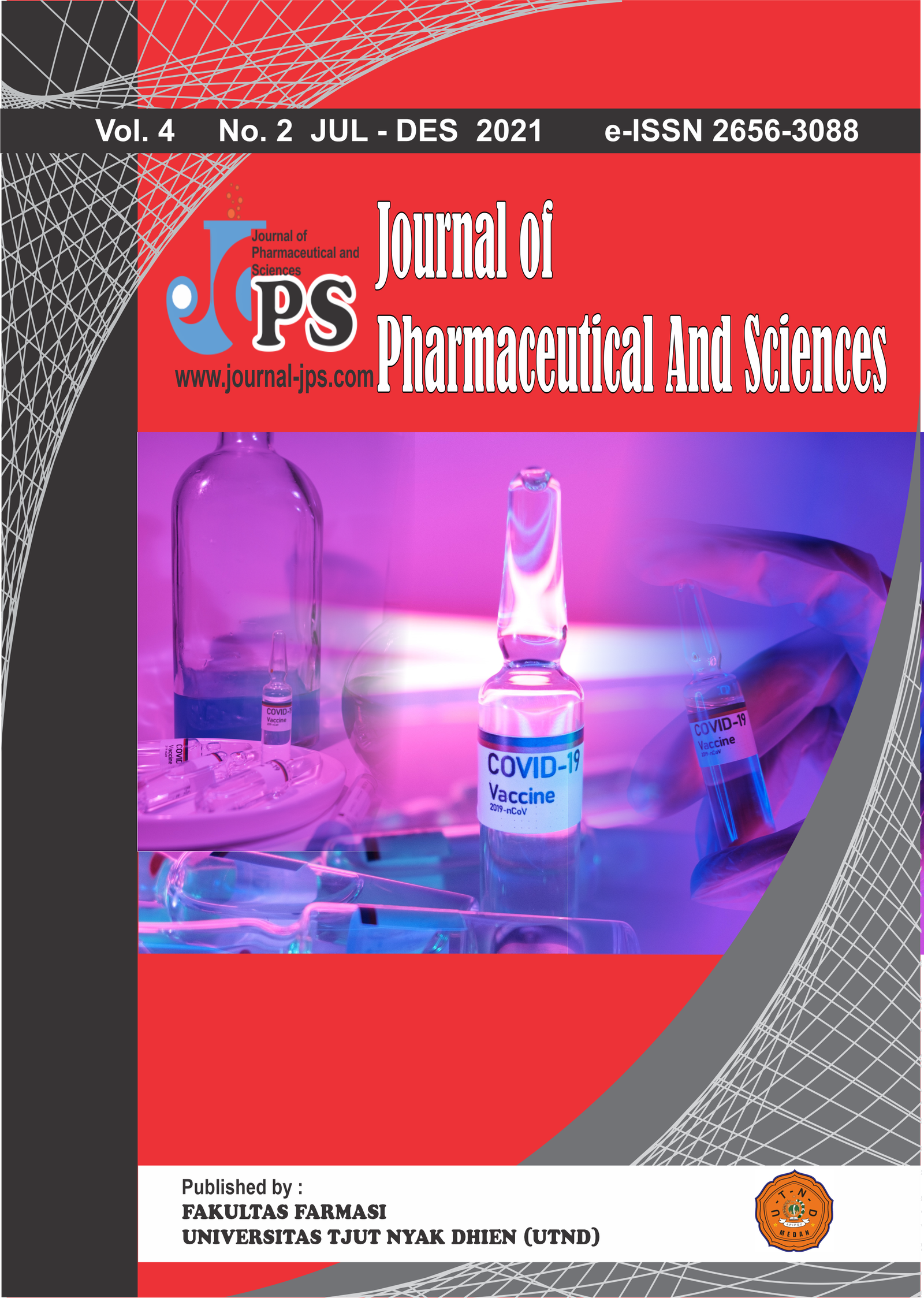Abstract
Traditionally, kecombrang flowers have been used to treat various diseases, including colds, earaches, blood purifiers, treat festering wounds and eliminate body odor. Various bacteria may cause ear diseases, purulent wounds, and body odor, so the kecombrang flower, which has been used traditionally to treat this disease, maybe due to its anti-bacterial activity against both Gram-positive and Gram-negative, so it is necessary to do research with the aim of ensuring the presence of anti-bacterial activity. This research includes collecting kecombrang flowers, plant identification, making Simplicia, phytochemicals, making kecombrang flower extracts by percolation with 96% ethanol extract. Testing anti-bacterial activity in vitro by diffusion method with punch holes on Mueller Hinton Agar medium, and used Ampicillin sulfate 20 g/ml as a control against Staphylococcus aureus, Streptococcus pneumonia, Escherichia coli, and Pseudomonas aeruginosa bacteria. Phytochemical screening showed the presence of the same group of compounds, namely alkaloids, flavonoids, steroids, glycosides, and essential oils. The results of the anti-bacterial activity test of the ethanol extract of the excellent kecombrang flower against Staphylococcus aureus, Streptococcus pneumoniae, Escherichia coli, and less suitable for Pseudomonas aeruginosa.
Downloads
Download data is not yet available.



